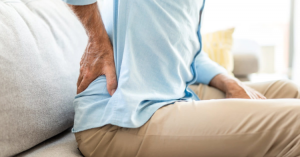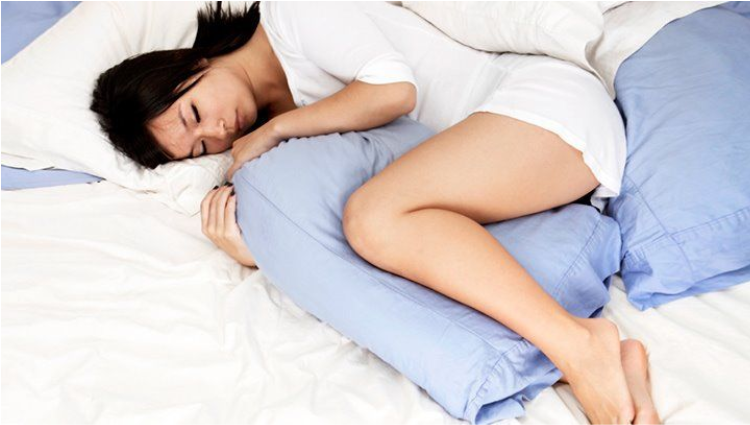Best Sleeping Positions For Lower Back Pains
The main symptoms of Lower Back Pain are muscle strain or spasms. However, the cause of the problem is not always apparent. In many cases, the cause of Lower Back Pain is a bulging disc, which presses on the sciatic nerve, which runs down the spinal column and carries nerve fibers to the leg. In this condition, the person feels intense pain in the lower back and can experience localized numbness or weakness. Sleeping Positions
A recent injury can cause low back pain. A sports injury or car accident can also result in this problem. It can also result from neurologic symptoms or bowel and bladder dysfunction. Most people experience mild to moderate back pain, which response to conservative treatment at home. Your physician may recommend anti-inflammatory medications and restrictions on strenuous activities. Listed below are some of the most common symptoms and treatments for Lower Head Pain.
Possible Reasons For A Lower Back Pain

If you are experiencing back pain, it is essential to know the potential causes.
There are many different causes of back pain, including improper posture, degenerative disc disease, spinal stenosis, or back injuries. However, aging is a common cause and losing bone and muscle strength and a decreased degree of flexibility in the discs. Other possible causes include obesity, pregnancy, and weak pelvic ligaments. Poor body mechanics and lifting heavy objects can also lead to pain in the lower back. Furthermore, people with poor body mechanics, excessive mental stress, and carrying a heavy backpack are at risk for low back pain. Some more reasons for lower back pain are:
Physical Injuries:
Physical injuries can also cause lower back pain. An accident or sports-related injury can aggravate the condition. A job that requires lifting heavy objects can be hazardous, too. Other reasons for lower back pain can be stress-related. For example, stress can lead to stiffness in the body. Physiotherapists are skilled at using appropriate exercises to treat the pain. The pain can occur suddenly or over time, ranging from a dull ache to intense discomfort. Also, you can face lower back pain if you sleep on a squeaky bed.
Weak Core Muscle:
There are many causes of lower back pain. Often, the reasons are simple. A weak core muscle can place stress on other forces, which can cause spinal misalignment. Other causes include a pinched nerve in the back called sciatica. Sciatica is a severe condition where a patient feels burning pain in the buttock or even down the back leg. Various things can cause it, but it is essential to seek medical attention as soon as possible.
Trauma:
Trauma can cause lower back pain. An injury to the spine may also affect the nerves in the back. Sometimes, a spinal cord is weakened, and the pain is chronic. This is a common reason for lower back pain. The spinal cord contains more nerves in the lower back than any other body part. If you have experienced low back pain, it is essential to consult a doctor immediately. If it is not a spinal disorder, it is necessary to seek medical attention for a diagnosis.
Sitting At The Computer For Long:
Unlike acute pain, which requires urgent medical attention, chronic pain is an ongoing problem that can last for years. It is best to seek medical attention as soon as possible if you suspect a back injury. In addition to the cases mentioned above, several daily activities can also cause low back pain. Sitting at a computer for long periods, standing for prolonged periods, or reading a book can also strain the lower back, as can psychological stress.
Sleeping Positions For Lower Back Pain
Lying On The Back:
Several positions are considered best for people with lower back pain. The most popular position is lying on your back. This position allows you to distribute your weight evenly, reduces pressure points, and aligns your spine. However, sleeping on your side can cause your back to sag. If you must sleep on your side, you should use a low pillow under your knees. If you’re in severe pain, sleeping on your side isn’t recommended.
Bending The Knees:
One of the best sleeping positions for lower back pain is the one that feels the least uncomfortable. A partial bend in the knees helps balance the body and relieve pressure on the lumbar spine. Many people will put a small pillow between their knees and lower back. If you’re a stomach sleeper, place a supportive pillow under your knees and lower back. To reduce the pressure on your spine, you can use a large pillow under your hips.
Lying On The Side:
For side sleepers, the best sleeping position is lying on your side. It will allow you to avoid tucking your legs or rotating your hips, which isn’t good for your lower back. If you’re a side sleeper, you can put a pillow under your knees and your hips. But don’t sleep on your side because it can stretch your lower back.
Using Pillow Underneath The Hips:
While a side sleeper should have a bent knee, you can also use a small pillow underneath your hips. This position is perfect for people with lower back pain. Although the most important thing is to be comfortable, you should ensure that the position is as natural as possible. A slight bend in your knees can help alleviate your lower back pain. This is an excellent position for anyone to sleep. Also you must always make sure to deep clean a mattress regularly.
In Conclusion
Aside from sleeping on your back, you can also sleep on your side. You should avoid sleeping on your stomach because it can strain your lower back. While sleeping on your side, you should keep your knees slightly bent. You can also use a pillow on your knees. You can put your knees up and then lean your head down on a pillow in this position. Aside from the advantages of lying on your side, you can also sleep in the correct posture for your body.




